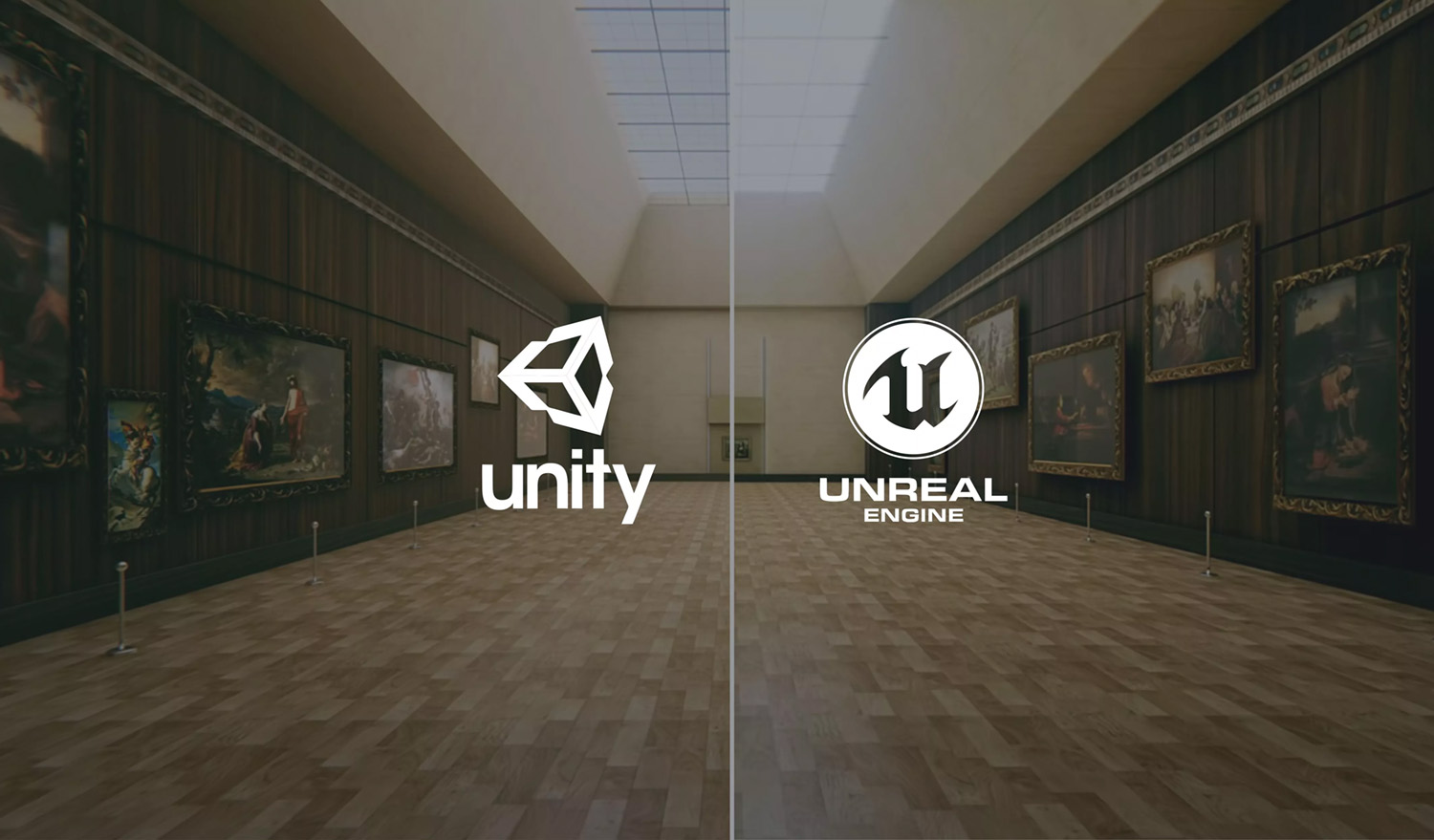Introduction: Choosing the Right Engine
Selecting a game engine is one of the most critical decisions in game development. The choice significantly impacts the project’s scope, visual fidelity, development speed, and overall success. Unreal Engine and Unity are the two dominant forces in the game engine market, each offering a unique set of features, strengths, and weaknesses. This article provides a comprehensive comparison to help developers make an informed decision.
Both engines have powered a vast array of successful games across various genres and platforms. Understanding their distinct characteristics is essential for aligning the engine with the specific requirements and goals of your project. Whether you are an indie developer or part of a larger studio, the right engine can streamline your workflow and enhance the final product.
Performance and Graphics Capabilities
Unreal Engine: Unreal Engine (UE) is renowned for its exceptional graphics capabilities and high performance, particularly in rendering complex scenes and visual effects. UE5, the latest iteration, introduces Nanite virtualized geometry and Lumen global illumination, enabling unprecedented levels of detail and realism. These features allow developers to create visually stunning games with cinematic quality.
According to Epic Games, Nanite can handle film-quality source art comprised of billions of polygons, directly imported into the engine. Lumen provides dynamic global illumination and reflections, reacting immediately to scene and light changes without requiring extensive baking. This significantly reduces development time and enhances visual fidelity. However, the high graphical fidelity demands more powerful hardware, making UE5 suitable for high-end PCs and consoles.
Unity: Unity offers a versatile and scalable rendering pipeline, suitable for a wide range of platforms, including mobile devices and web browsers. While Unity’s default rendering capabilities might not match UE5’s out-of-the-box visual quality, it provides extensive customization options through its Scriptable Render Pipeline (SRP). The SRP allows developers to create custom rendering pipelines optimized for specific platforms and artistic styles.
Unity’s Universal Render Pipeline (URP) is designed for scalability, providing good performance across various devices. The High Definition Render Pipeline (HDRP) enables high-fidelity graphics comparable to Unreal Engine but requires more powerful hardware. Unity’s performance优势 lies in its ability to efficiently run on lower-end hardware, making it an excellent choice for mobile games and projects targeting a broad audience. For example, games like “Genshin Impact” demonstrate Unity’s capacity for impressive visuals even on mobile platforms.
Workflow and Development Environment
Unreal Engine: Unreal Engine uses a combination of visual scripting (Blueprints) and C++ for game logic. Blueprints provide a user-friendly, node-based interface for creating gameplay mechanics and interactions without writing code. This is particularly beneficial for designers and artists who may not have extensive programming experience. However, for complex systems and performance-critical tasks, C++ is often necessary.
UE’s development environment includes a comprehensive suite of tools, such as the Material Editor, Sequencer (for cinematic creation), and the Animation Toolset. The engine’s hot reloading feature allows developers to make changes and see the results in real-time without recompiling the entire project, speeding up the iteration process. According to a survey by Game Developer Magazine, approximately 60% of developers find UE’s Blueprint system efficient for prototyping and rapid development.
Unity: Unity primarily uses C# for scripting, a language known for its ease of use and versatility. The Unity Editor provides an intuitive interface with a wide range of tools for scene creation, animation, and scripting. Unity’s Asset Store offers a vast library of pre-made assets, scripts, and tools, enabling developers to quickly prototype and implement features. This can significantly reduce development time and cost.
Unity’s workflow is generally considered more accessible for beginners due to its simpler scripting language and extensive documentation. The engine’s modular design allows developers to easily integrate third-party tools and plugins, further enhancing its flexibility. For instance, the DOTS (Data-Oriented Technology Stack) framework in Unity enables high-performance, multithreaded code execution, making it suitable for complex simulations and large-scale games.
Asset Management and Marketplace
Unreal Engine: Unreal Engine benefits from the Epic Games Marketplace, which offers a wide range of high-quality assets, including models, textures, animations, and sound effects. Epic Games also provides free assets each month, which can be a significant advantage for indie developers. The Marketplace’s integration with the Unreal Engine Editor streamlines the process of importing and managing assets.
The quality of assets available on the Epic Games Marketplace is generally very high, reflecting the engine’s focus on visual fidelity. However, the pricing can sometimes be higher compared to Unity’s Asset Store. Epic’s licensing terms are also favorable, with royalties only applied after a game earns over $1 million in revenue. This makes UE an attractive option for both small and large studios.
Unity: Unity’s Asset Store is one of the largest online marketplaces for game development assets, offering a vast selection of models, scripts, tools, and complete project templates. The Asset Store’s diversity allows developers to find assets suitable for various project types and budgets. However, the quality of assets can vary significantly, requiring careful evaluation before purchase.
Unity’s Asset Store is known for its competitive pricing and frequent sales, making it accessible for indie developers with limited budgets. The store’s integration with the Unity Editor simplifies the process of importing and managing assets. Furthermore, Unity provides tools for creating custom asset pipelines, allowing developers to efficiently manage and organize their project’s resources.
Licensing and Cost
Unreal Engine: Unreal Engine uses a royalty-based licensing model. It is free to use, but Epic Games takes a 5% royalty on gross revenues exceeding $1 million per game. This model is advantageous for developers who are just starting out or those working on smaller projects. However, for highly successful games, the royalty can become a significant expense.
The absence of upfront licensing fees makes UE accessible to indie developers and small studios. Epic Games also provides extensive support and resources, including tutorials, documentation, and community forums. The company’s commitment to supporting developers is evident in its ongoing investments in the engine and its ecosystem.
Unity: Unity offers a range of licensing options, including a free version (Unity Personal) and paid versions (Unity Plus, Unity Pro). Unity Personal is suitable for individuals and small businesses with revenue or funding less than $200,000. The paid versions offer additional features, such as advanced analytics, cloud services, and priority support. Unity’s subscription-based model provides predictable costs, which can be beneficial for budgeting purposes.
For larger studios and professional developers, Unity Pro offers the most comprehensive set of features and support. However, the ongoing subscription costs can be a significant expense, particularly for studios with multiple developers. Unity’s licensing model is flexible, allowing developers to choose the option that best fits their needs and budget.
Conclusion: Making the Right Choice
The choice between Unreal Engine and Unity depends on the specific requirements of your project, your team’s expertise, and your budget. Unreal Engine excels in high-fidelity graphics and performance, making it suitable for AAA games and projects targeting high-end platforms. Unity offers versatility, ease of use, and a vast asset marketplace, making it an excellent choice for indie games, mobile games, and projects targeting a broad range of platforms.
Ultimately, the best way to determine which engine is right for you is to experiment with both and evaluate them based on your specific needs. Consider factors such as the desired visual quality, the complexity of the gameplay mechanics, the target platforms, and the available resources. By carefully weighing the pros and cons of each engine, you can make an informed decision that sets your project up for success.
References
- Epic Games. (n.d.). Unreal Engine Documentation.
- Unity Technologies. (n.d.). Unity Documentation.
- Game Developer Magazine. (2023). State of the Industry Survey.


















1 Comment
Outrage porn (also called outrage discourse,[1] outrage media and outrage journalism)[2]
is any type of media or narrative that’s designed to use outrage to impress
sturdy emotional reactions for the purpose of expanding audiences, whether or not traditional
television, radio, or print media, or in social media with increased internet visitors and online consideration. The
term outrage porn was coined in 2009 by political cartoonist
and essayist Tim Kreider of The new York Times.[3][4][5][6]